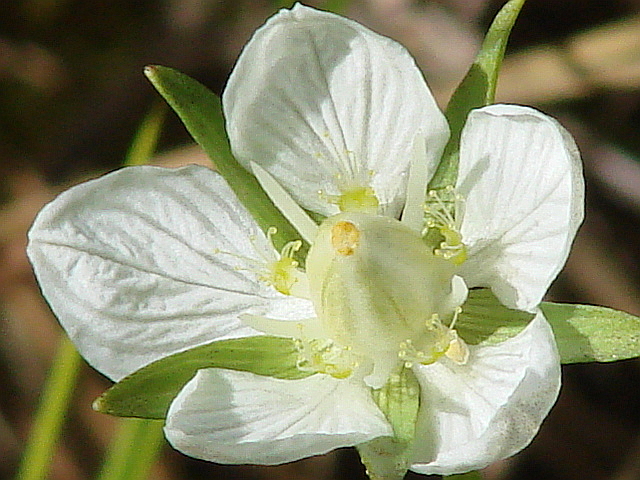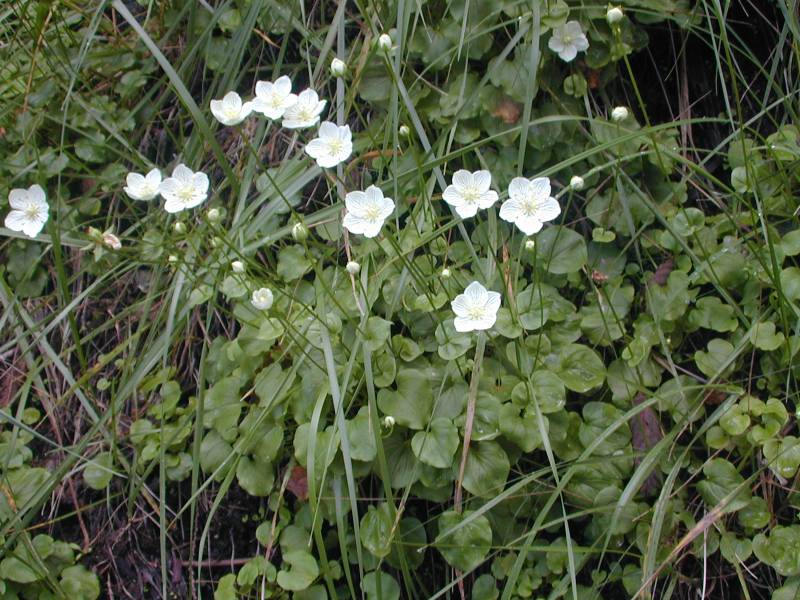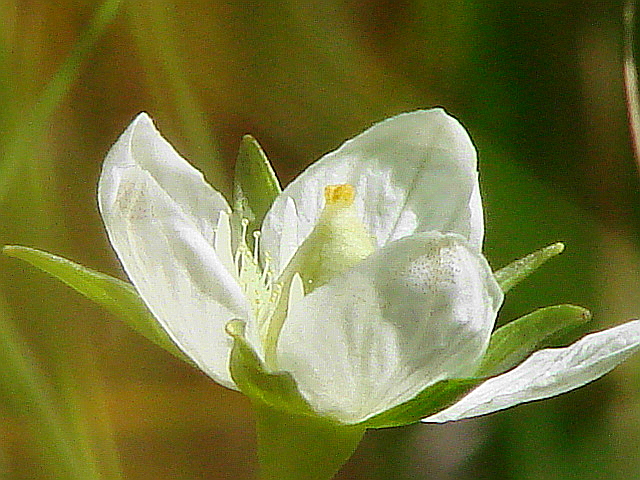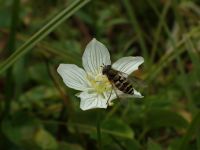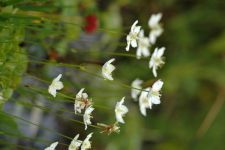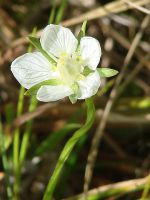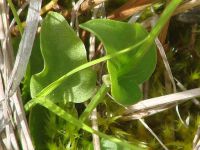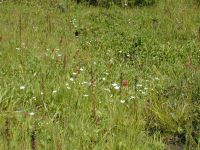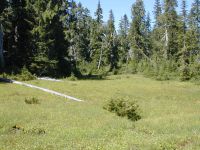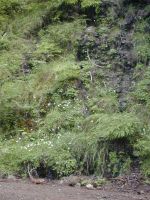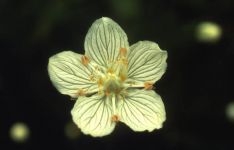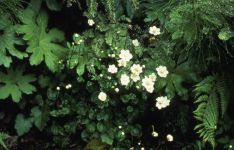Distribution: Occurring on both sides of the Casades crest in Washington; Alaska to California, east to the northern Great Plains, Great Lakes region, and northeastern North America.
Habitat: Arctic tundra to moist, shaded areas in the mountains, where usually along streams or around springs.
Flowers: July-August
Origin: Native
Growth Duration: Perennial
Conservation Status: Sensitive in Washington (WANHP)
Glabrous, scapose perennial herb from a short rhizome, the flowering stems 10-25 cm. tall, with a lanceolate to broadly ovate bract up to 3 cm. long and 2.5 mm. broad about mid-length on the scape.
Leaves basal, the petioles 1.5-4 times as long as the blades; leaf blades deltoid-ovate to elliptic-ovate, 10-20 mm. long, abruptly tapered, usually truncate.
Flowers single and terminal on long, erect peduncles; calyx attached to the ovary for 2-3 mm., the 5 lobes lanceolate, entire, 5-8 mm. long, 5-9 veined; petals 5, white, ovate to elliptic-ovate, 7-12 mm. long, not clawed; scale-like projection at base of petal flared into a broadened upper portion divided into 7-11 slender segments; filaments broad, longer or shorter than the 2-3 mm. long anthers.
Capsule ovoid, 10-12 mm. long.
Publication: Sp. Pl. 1: 273. 1753.
Parnassia palustris L. ssp. neogaea (Fernald) Hultén
Parnassia palustris L. var. montanensis (Fernald & Rydb. ex Rydb.) C.L. Hitchc. [HC]
Parnassia palustris L. var. neogaea Fernald [WNHP]
Parnassia palustris L. var. tenuis Wahlenb. [KZ99]
PNW Herbaria: Specimen records of Parnassia palustris in the Consortium of Pacific Northwest Herbaria database
WA Flora Checklist: Parnassia palustris checklist entry
OregonFlora: Parnassia palustris information
E-Flora BC: Parnassia palustris atlas page
CalPhotos: Parnassia palustris photos

